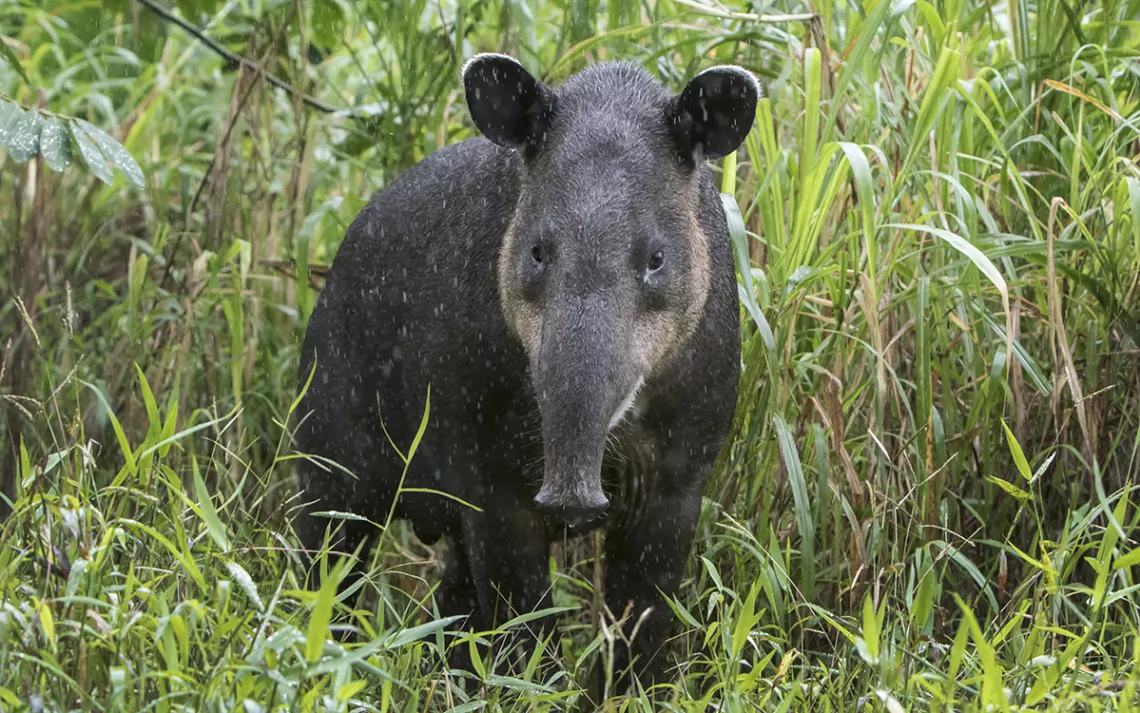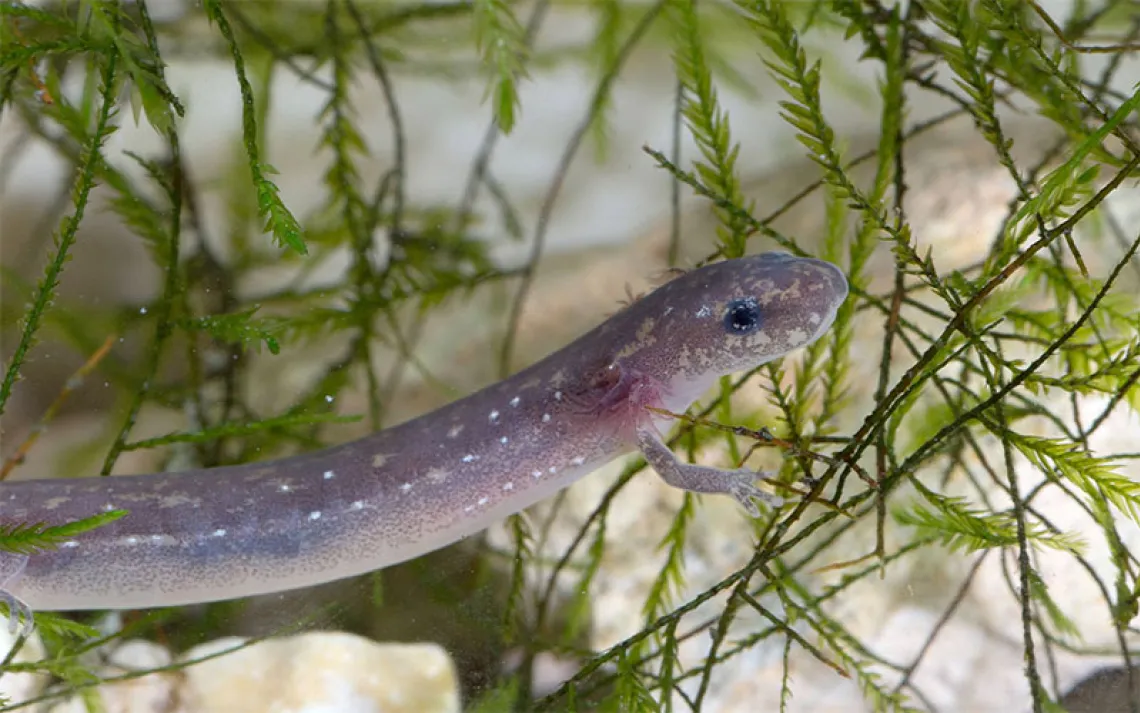We Need Tapirs More Than They Need Us
They’re one of the few animals that can resuscitate degraded forests—if there are any of them left

Photo by Mark Kostich/iStock
When tapirs first came on the scene during the Paleocene epoch, 66 million years ago, the world looked very different than it does today—and not only because it had recently been hit by a seven-mile-wide asteroid traveling at 27,000 miles per hour. After the impact, Earth descended into a dark, smoldering mess of debris; within a short time, dinosaurs died out, along with all the large marine and flying reptiles. Birds, small mammals, and a few remaining flora and fauna were left to start life anew. The mega-beasts of yesteryear were gone, and it was finally the mammals’ chance to thrive, especially the tapir.
A member of the Perissodactyl group that includes horses, zebras, and rhinoceroses, tapirs quickly diversified and spread across North America. Curious creatures that resemble an oversize hog with an anteater snout, they lived alongside miniature horses and phenacodontids, a now extinct herbivore about the size of a fox. But while horses evolved from forest dwellers to grazers as grasslands spread across the West, tapirs have changed little over tens of millions of years: Their teeth, jaw, and body structure remain largely unchanged. As a result, says Larisa DeSantis, an associate professor of biological sciences at Vanderbilt University, tapirs can provide a window into our prehistoric past. For example, their fossils tell us where ancient forests once stood. “Tapirs are living fossils that we know have never resided outside of forests,” says DeSantis.
Shy and unassuming, tapirs have an ability to disappear in plain sight. That’s part of the reason they have lived this long. Even those trained to track tapirs, says DeSantis, often have a hard time finding them. But in recent years, Brazilian highways surrounding their habitat make it difficult to safely navigate between forests. The heavy traffic on the highway that cuts between the northern and southern Atlantic Forest is a death trap for wildlife. “Tapirs often die when attempting to cross it,” according to Patrícia Medici, coordinator of the Lowland Tapir Conservation Initiative.
As a result, says researcher Kevin Flesher, a scientist at the Michelin Ecological Reserve in Bahia, the tapir’s range is now less than 2 percent of what it once was in the Atlantic Forest, which covers Brazil, Argentina, and Paraguay. Medici and Flesher’s research, detailed in a recent study in Neotropical and Biological Conservation, found that of the 48 populations of tapirs documented in the study, between 31 and 69 percent were “demographically unviable.” The tapir populations are becoming too isolated from one another to reach different groups.
Like many large mammals, tapirs only have one calf at a time and tend to wait a few years between births. With such low populations, says Flesher, every animal lost to a traffic accident or a hunter can have dire implications for the species. He says that now is the time to act, as new highway construction already underway could further threaten tapir habitat.
“We need a combination of strategies including signs and speed traps to avoid speeders on the highways,” says Flesher. “On the larger super-highways, we need [wildlife] underpasses and overpasses, especially as two-lane highways are being expanded.” Use of such tools in other parts of the world, Flesher says, has made a big difference in protecting these animals from becoming roadkill.
The picture isn’t all bleak, however. Hunting tapirs, which used to be a problem in the Atlantic Forest, is now illegal in Brazil’s reserves. The hunting ban has led to increased populations in some areas. “Today people are generally afraid to kill tapirs because they’re big enough to draw attention in these small villages and they don’t want the authorities finding out,” says Flesher. “These are resilient creatures, and if humans get out of the way, they’ll be just fine. They can eat just about anything in the forest and have for millions of years.”
Even if humans seldom see them, tapirs are hard at work. They have a surprisingly critical role in the forest by virtue of being one of the few remaining South American mammals large enough to ingest and expel large seeds and scatter them across the woods. “Tapirs are among the principal dispersers of large-seeded fruits,” says Flesher. “These are some of the most endangered forests in the world, and they depend on tapirs for their very survival.” When you go into forests where the tapirs and monkeys have been wiped out, he says, the forests can quickly die out. Research conducted in Brazil found that tapirs disperse three times more seeds in degraded forests than in primary forests, which means that when forests are destroyed by wildfire, for example, tapirs can help resuscitate them.
So while tapirs really don’t need us, we need them. Not only are these animals the key to unlocking the world’s ancient forests, but they’re also important for preserving them in the future.
 The Magazine of The Sierra Club
The Magazine of The Sierra Club



